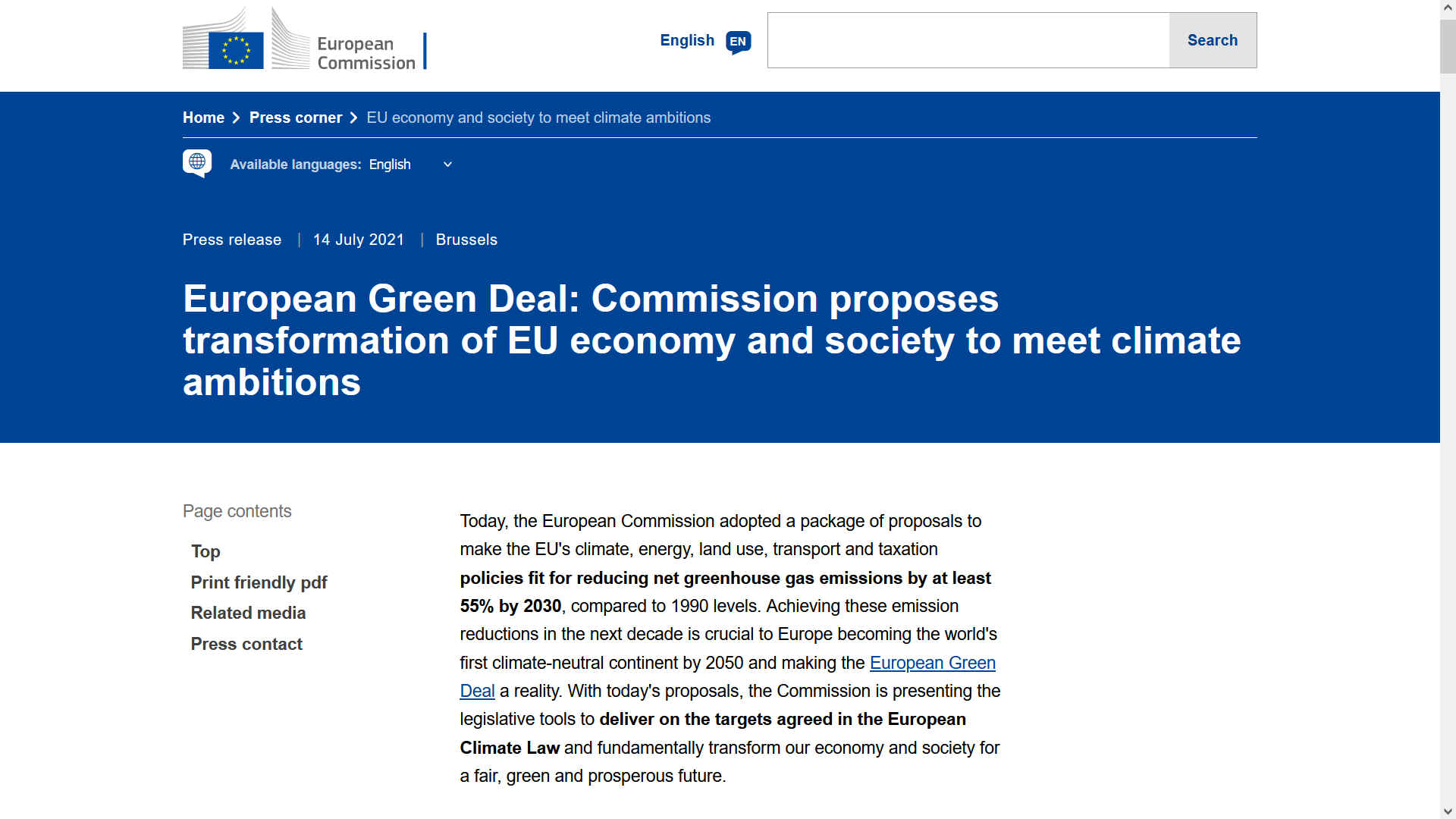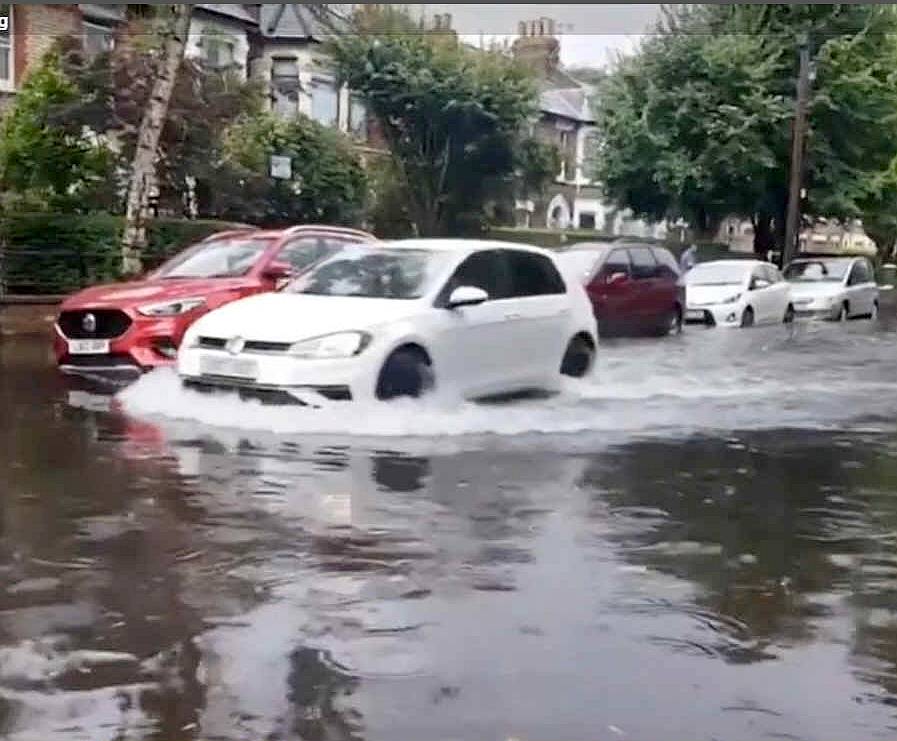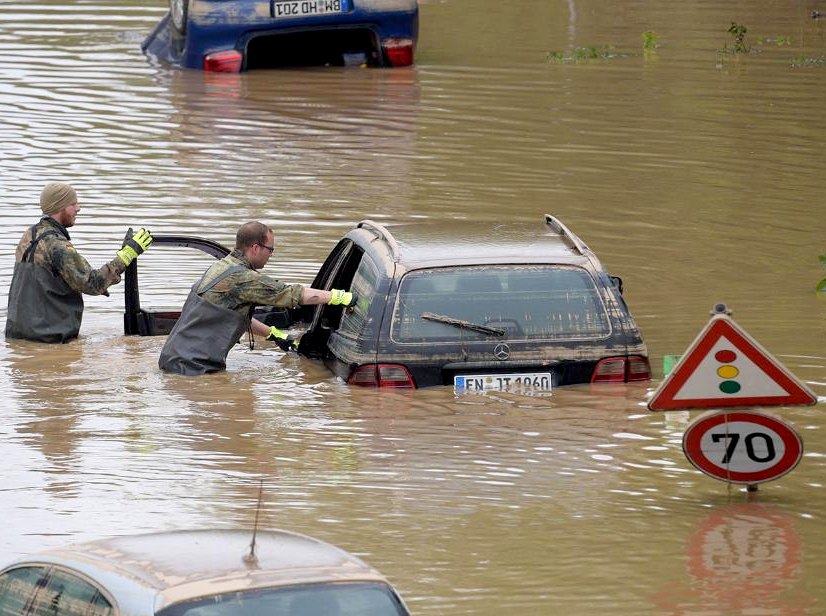|

On 14 July 2021 the
European Commission adopted the
'fit for
55' package, adapting existing climate and energy legislation to meet the new EU objective of a minimum 55% reduction in greenhouse gas (GHG) emissions by 2030. The fit for 55 package is part of the European Green Deal, a flagship of the von der Leyen Commission that aims to put the EU firmly on the path towards climate neutrality by 2050, as
part of the Green Deal and Renewable Energy Directives (RED I & II).
The European Green Deal is a set of policy initiatives by the European Commission with the overarching aim of making the European Union (EU) climate neutral in 2050. An impact assessed plan will also be presented to increase the EU's greenhouse gas emission reductions target for 2030 to at least 50% and towards 55% compared with 1990 levels. The plan is to review each existing law on its climate merits, and also introduce new legislation on the
circular economy, building renovation, biodiversity, farming and innovation.
The president of the European Commission, Ursula von der Leyen, stated that the European Green Deal would be Europe's "man on the moon moment". Von der Leyen appointed
Frans Timmermans as Executive Vice President of the
European Commission for the European Green Deal. On 13 December 2019, the European Council decided to press ahead with the plan, with an opt-out for Poland. On 15 January 2020, the European Parliament voted to support the deal as well, with requests for higher ambition.
The European Commission's climate change strategy, launched in 2020, is focused on a promise to make Europe a net-zero emitter of
greenhouse gases by 2050 and to demonstrate that economies will develop without increasing resource usage. However, the Green Deal has measures to ensure that nations that are already reliant on
fossil fuels are not left behind in the transition to
renewable
energy.
CONTACTS
E. eprs@ep.europa.eu (contact)
www.eprs.ep.parl.union.eu (intranet)
www.europarl.europa.eu/thinktank (internet)
http://epthinktank.eu (blog)
SEVEN YEAR RESEARCH REVIEW - BRUSSELS MARCH 2022
The European Climate, Infrastructure and Environment Executive Agency (CINEA) together with the Directorate-General for Research and Innovation (DG RTD) and the STEERER project (Structuring Towards
Zero Emission Waterborne
Transport) are organising the workshop “Horizon 2020 Research and Innovation delivering smart, green, safe and competitive waterborne transport”, which will take place on 7 February in Brussels (Residence Palace, Rue de la Loi 155) as well as online.
Horizon
Europe
The workshop will present the results of seven years of investments in research and innovation towards smart, green and integrated waterborne transport, which took place in the framework of Horizon 2020. The event will also provide an outlook to the future in the light of the new
Horizon Europe programme.
THE
DRIVERS: LEGALLY BINDING TARGETS ?
There are as yet not legally binding targets coming out of events such as COP26 (for example)
- hence
where some players may say they are agreeable to such targets, in reality
they can sit on the fence as observers with fingers crossed, hoping that other countries
will produce the technological miracles to carry their expansion plans forward,
and dig them out of their fossil fueled holes. Development such as that funded by
waterborne and ZEWT
programmes shows good faith intentions from the EU, and solid advances in
knowledge, even though somewhat plodding along, it is still progress.
EMISSIONS
At COP26
it was agreed countries will meet next year to pledge further cuts to emissions of
carbon dioxide (CO2) - a greenhouse gas which causes
climate
change.
This is to try to keep temperature rises within 1.5C - which scientists say is required to prevent a "climate catastrophe". Current pledges, if met, will only limit
global warming to about
2.4C, and even those are slipping. Without stepping
up change, to get the job done, the human race and the planet are in for a
rough ride.
COP26 was the
event in Glasgow where countries revisited the climate pledges they made under the
2015 Paris
Agreement. COP27 is to be held in
Egypt.
FOSSIL FUEL SUBSIDIES
World leaders agreed to phase-out subsidies that artificially lower the price of
coal, oil, or natural gas.
However, as with other so-called commitments, no firm dates have been set.
These subsidies are braking the adoption of renewables, making solar, wind
and hydrogen power appear less competitive than they actually are. Indeed,
renewable electricity
is cheaper than coal
burning and nuclear
power stations.


SIGNS
FROM ABOVE - JULY 2021 - Floods
in London, Belgium and Germany cause huge damage to property, with temperatures
soaring. Despite this, one crisis now circulating is the “global water crisis”. That, in combination with the global warming crisis, of course is leading to mass crop failures, thirst and later mass starvation, unless we act
now.
FUNDING DEVELOPMENT
Financial organisations controlling $130tn agreed to back "clean" technology, such as
renewable
energy, and direct finance away from
fossil fuel-burning industries.
The initiative is an attempt to involve all of us to meeting net zero targets.
The
European Union (EU) funds a number of research and innovation projects from
a pool of money, that is designed to accelerate technology by way of a green
driver aimed at economic stability. The policies and thus, calls for
proposals are looking for near-to and long-term projects to assist with the
transition to zero emission transport, that is sustainable. Hence Net Zero.
Technology
Readiness Levels are thus all important. With a tendency to leap over
development hurdles, as though the technology is more advanced than it
actually is. Leaving holes in our knowledge bank.
Typically,
pure research is 100% funded. Levels of funding then fall significantly, on
the presumption that industry will make up the shortfall - even where
conflicts of interest exist - to block development that threatens existing
products and fuels.
When weighing up future-fuel options, it is becoming increasingly necessary to take a well-to-wake approach to calculating GHG emissions. The
European Commission recently adopted the ambitious Fit for 55 Package, a set of proposals aimed at making the EU’s climate, energy, land use, transport and taxation policies fit for reducing net emissions by at least 55% by 2030 compared to 1990 levels. This package places even greater demands on the maritime industry, which is expected to reduce its emissions by 75% by 2050 compared to 2020 levels.
|



